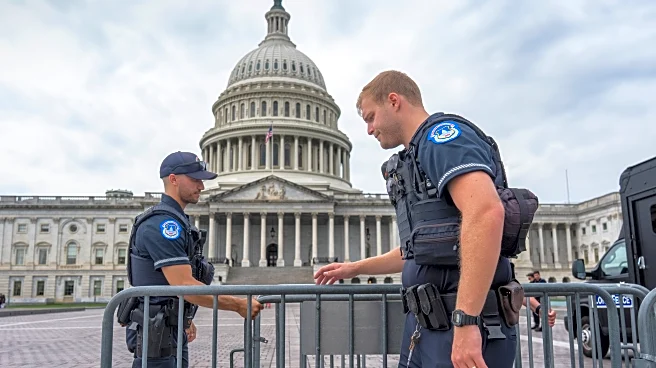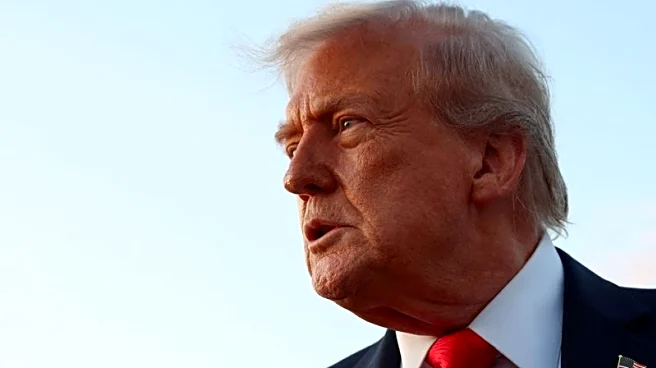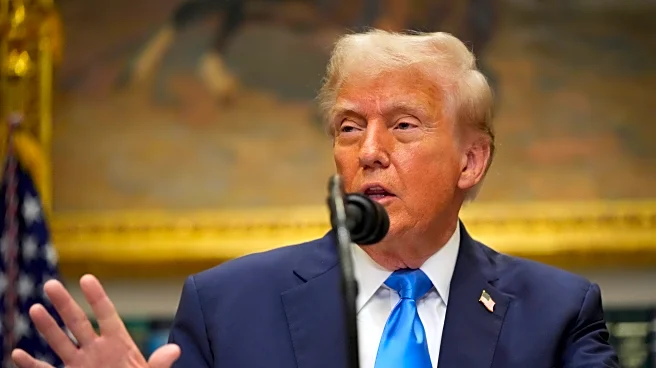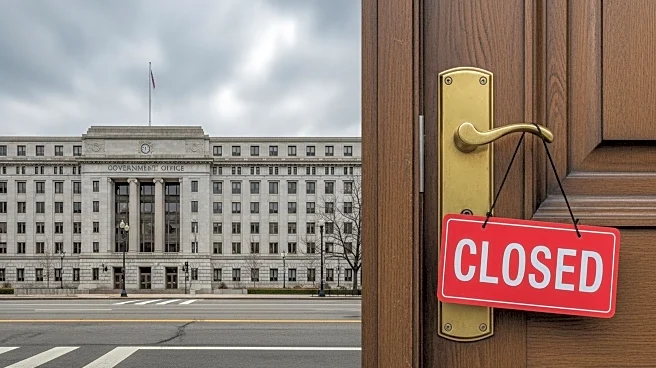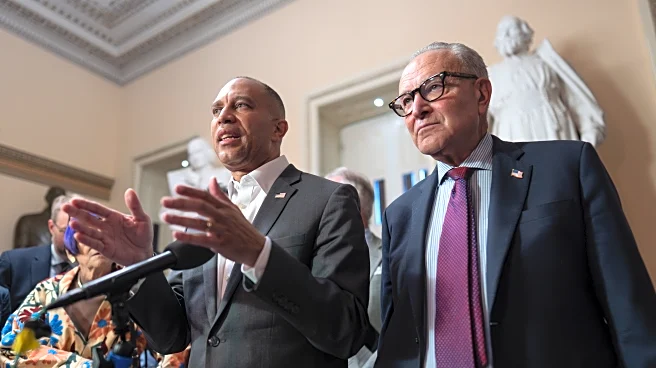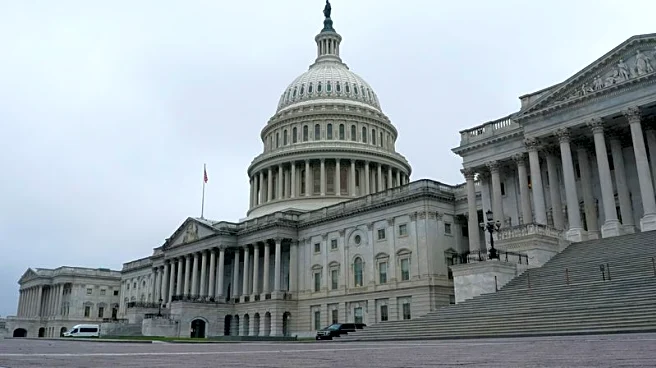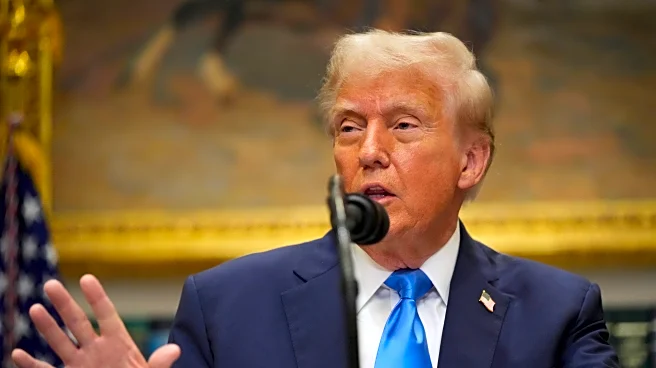What's Happening?
The White House has indicated that if the government shuts down on October 1, it may issue 'reduction in force' notices to permanently eliminate some federal positions, rather than temporarily furloughing employees. This approach, outlined in a memo from the Office of Management and Budget, marks a departure from previous shutdown strategies. The administration, led by President Trump's budget director Russell Vought, aims to cut programs not aligned with the president's priorities, such as foreign aid and funding for electric vehicle charging stations. The proposal has sparked controversy, with Senate Minority Leader Chuck Schumer criticizing it as an intimidation tactic.
Why It's Important?
The potential shift from furloughs to permanent layoffs during a government shutdown could have significant implications for federal employees and the functioning of government programs. This strategy reflects a broader effort by the Trump administration to reshape federal spending and reduce the size of government. The move could lead to legal challenges and political backlash, particularly from Democrats who oppose the cuts. The outcome of this situation could influence future budget negotiations and the balance of power between the executive branch and Congress regarding federal spending decisions.
What's Next?
As the October 1 deadline approaches, negotiations between the White House and Congress will be critical in determining whether a shutdown occurs and how it is managed. The administration's proposal may face resistance from Democrats and potentially some Republicans, leading to further political maneuvering. If a shutdown occurs, the implementation of 'reduction in force' notices could lead to legal challenges and public outcry, influencing future budgetary and political strategies.

